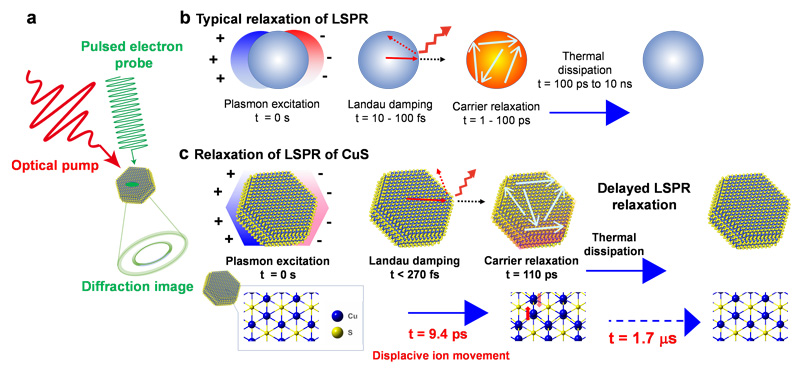2023-07-20 バーミンガム大学
◆研究により、酸素ホール形成がカソードの劣化を促進することが明らかになりました。また、充放電時のニッケルイオンの電荷が変わらず、酸素の電荷は-1.5から-1に変化することも発見されました。
◆研究者たちは酸素が材料から失われるメカニズムを提案し、効率的かつ信頼性のあるエネルギー貯蔵システムのためにカソード材料の安定性を向上させる可能性を示しました。
<関連情報>
- https://www.birmingham.ac.uk/news/2023/current-thinking-on-batteries-overturned-by-cathode-oxidation-research
- https://www.cell.com/joule/fulltext/S2542-4351(23)00267-2
酸素ホール形成がLiNiO2正極の安定性を制御する Oxygen hole formation controls stability in LiNiO2 cathodes
Annalena R. Genreith-Schriever,Hrishit Banerjee,Ashok S. Menon,Euan N. Bassey,Louis F.J. Piper,Clare P. Grey
Joule Published:July 19, 2023
DOI:https://doi.org/10.1016/j.joule.2023.06.017

Highlights
•Dominant O-redox contributions to Ni–O redox in LiNiO2 and oxygen holes
•Excellent agreement between predicted and experimental X-ray absorption spectra
•Reaction pathway of oxygen evolution via peroxide intermediate
•Spin conservation of peroxide ground-state singlet causes release of singlet oxygen
Context & scale
High Ni content layered transition metal oxides enable lithium-ion batteries with high operating voltages but are prone to degradation. Electrolyte oxidation results as the material is delithiated, along with oxygen evolution and surface reconstructions of the cathodes. Mitigating these phenomena requires a comprehensive understanding of the relevant processes. We here propose that a major source of these instabilities arises from the oxide anion oxidation on delithiation: “Ni” redox processes occur whereby essentially all of the charge is removed from the O ions directly bound to Ni. Our simulations show that the surface O⋅− radicals formed during the redox processes combine to form peroxide ions, and these disproportionate to form molecular oxygen and oxygen anions. The ground-state singlet of the peroxide intermediate governs the release of singlet oxygen via spin conservation. This understanding of bulk/surface reaction mechanisms provides insights into how to maximize the performance and lifetime of future cathodes.
Summary
Ni-rich lithium-ion cathode materials achieve both high voltages and capacities but are prone to structural instabilities and oxygen loss. The origin of the instability lies in the pronounced oxidation of O during delithiation: for LiNiO2, NiO2, and the rock salt NiO, density functional theory and dynamical mean-field theory calculations based on maximally localized Wannier functions yield a Ni charge state of ca. +2, with O varying between −2 (NiO), −1.5 (LiNiO2), and −1 (NiO2). Calculated X-ray spectroscopy Ni K and O K-edge spectra agree well with experimental spectra. Using ab initio molecular dynamics simulations, we observe loss of oxygen from the (012) surface of delithiated LiNiO2, two surface O⋅− radicals combining to form a peroxide ion, and the peroxide ion being oxidized to form O2, leaving behind two O vacancies and two O2− ions. Preferential release of 1O2 is dictated via the singlet ground state of the peroxide ion and spin conservation.



